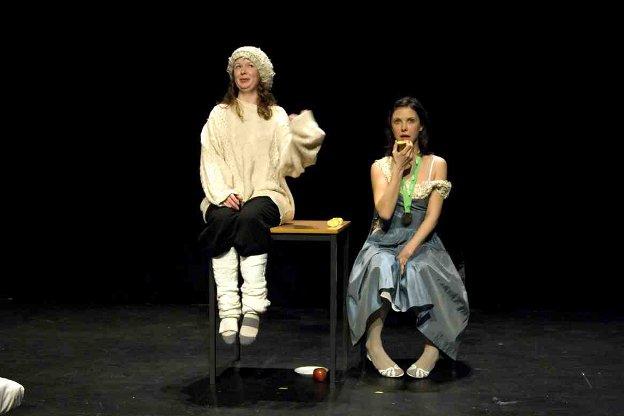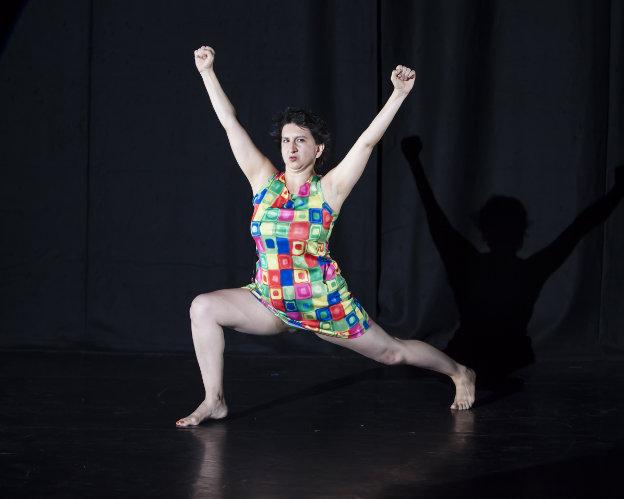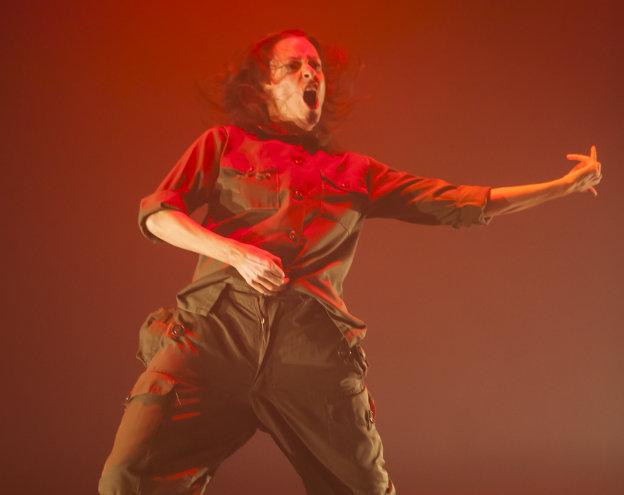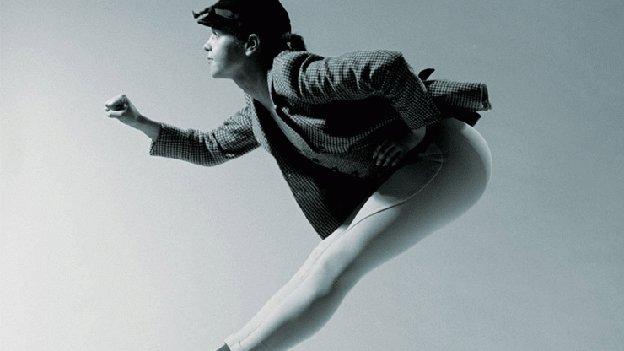Caroline Horton’s runaway hit You’re Not Like The Other Girls Chrissyestablished her as a writer and performer of some distinction – a gracious and engaging presence on stage with a good ear for the rhythm of prose and a natural wit.
Mess has been a harder call. A play about her own experience with anorexia, made for the Traverse and premiering at the Edinburgh Fringe – on paper it’s a challenging prospect. But Caroline has devised a method for telling the story that is clever and wise – one that takes Mess away from being a personal and inward focused piece and makes it into a play that could relate to any illness or human condition.
A cast of three, who perhaps trained at Lecoq, are going to put on a play to tell the story of Josephine who was an anorexic. The premise is that in the future this little story will be told on a big stage, with proper scenery and an orchestra in the pit and a much bigger audience. So for now we are getting Mess ‘Lite’. Josephine (Horton), is supported on stage by Seiriol Davies as Sistahl, who provides music and foleys, and Hannah Boyde as Boris, a sort of ‘everyman’ character.
Anorexia is represented by a high platform covered with white camberwick that stretches on to the floor. Josephine decorates it with a parasol hung with medals (for ounces lost), fairy lights and a duvet. Everything is white, calm, pretty and quiet up there. In a text that weaves together painful mealtimes, episodes of hospitalisation, trips to the beach and visits to the doctors there is a subtle interplay between humour and despair. Josephine is so committed to her illness she cannot see how it affects Boris or anyone else round her. She doesn’t believe she might die. ‘You will if you don’t eat,’ says Boris, quietly, walking off set.
Sistahl provides an inner voice – ‘this is the sub-text’ – and undercuts Josephine’s more haughty moments. He is the counterpoint to her role in controlling the theatricality of the play.
Mess deals with a difficult subject and one that on the face of it might not have broad audience appeal. It is a tribute to Caroline Horton and her team of producers, her director and advisors that she has produced a play that, whilst not easy to hear, is a delight to watch.
The characters are engaging, the musical accompaniment has just the right tone and the piece is elegantly lit and staged. Like the illness it shines a light on, Mess is controlled and knowing, yet playful. There is little punch in the final message. The play can’t end because that would suggest the issue of young men and woman with eating disorders has gone away. So we celebrate Josephine’s regained spontaneity and release, in the knowledge that Caroline will always be at risk.










